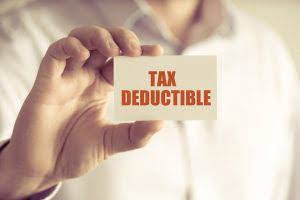What are Bonds? Types of Bonds & How they Work 2024
I Bonds are often favored by investors seeking protection against inflation, as their variable interest rate helps preserve purchasing power over time. They may be particularly attractive during periods of high inflation. Under the cash method, tax is only applied when the bonds are redeemed.
Mid-Year Outlook: Fixed Income
Muni bonds may also be exempt from state and local taxes if they’re issued in the state or city where you live. Another way is to buy them through a broker or an investment company. Finally, you can also invest in serial bonds through a mutual fund or an exchange-traded fund.
Part 3: Confidence Going Into Retirement
- For example, there is always a chance you’ll have difficulty selling a bond you own, particularly if interest rates go up.
- How much interest you earn depends on factors like the type of bond you own and whether it has reached maturity.
- Treasury bill, are always issued at a discount, and pay par amount at maturity rather than paying coupons.
- These bonds are typically high-quality and very liquid, although yields may not keep pace with inflation.
- These payments can vary from month to month and create irregular cash flows.
He is a CFA charterholder as well as holding FINRA Series 7, 55 & 63 licenses. He currently researches and teaches economic sociology and the social studies of finance at the Hebrew University in Jerusalem. Any opinions, analyses, reviews or recommendations expressed here are those of the author’s alone, and have not been reviewed, approved or otherwise endorsed by any financial institution. This editorial content is not provided by any financial institution. Diversification strategies do not ensure a profit and do not protect against losses in declining markets.
Who Can Invest in Term Bonds?
The initial price of most bonds is typically set at par or $1,000 face value per individual bond. The actual market price of a bond depends on the credit quality of the issuer, the length of time until expiration, and the coupon rate compared to the general interest rate environment. The face value of the bond is what is paid to the lender once the bond matures.
How can I buy bonds?
A good bond allocation might include each type — corporate, federal and municipal bonds — which will help diversify the portfolio and reduce principal risk. Investors can also stagger the maturities to mitigate interest-rate risk. Many bond investors “ladder” their bond exposure to manage this uncertainty. As bonds mature, the principal is reinvested, and the ladder grows. Though laddering may come at the cost of lower yield, it effectively diversifies interest-rate risk. Once a bond’s interest rate is set and made available to investors, the bond trades in what’s called the debt market.
What Is a Savings Bond?
Once an investor masters these few basic terms and measurements to unmask the familiar market dynamics, they can become a competent bond investor. Convertible bonds are a type of hybrid security that combines the properties of bonds and stocks. These are ordinary, fixed-income bonds, but they can also be converted into stock of the issuing company. This adds an extra opportunity for profit if the issuing company shows large gains in its share price. The nominal yield on a bond is simply the percentage of interest to be paid on the bond periodically.
What is your risk tolerance?
It’s key to understand the risk-and-return relationship if you’re thinking of investing in bonds. Look at a few examples to get a better handle on how rates, yields, and risk work together over bond-maturity periods. As the economy heats up, interest rates rise, depressing bond prices or even causing the bond market to crash as it did in 2022 and 2023. You might think bonds are a great buy during boom times, when prices are lowest, and a sell when the economy starts to recover.
Bond investments are one way to invest, by lending a company or government money rather than buying a stake (like stocks). A number of bond indices exist for the purposes of managing portfolios and measuring performance, similar to the S&P 500 or Russell Indexes for stocks. The most common American benchmarks https://accounting-services.net/ are the Bloomberg Barclays US Aggregate (ex Lehman Aggregate), Citigroup BIG and Merrill Lynch Domestic Master. Most indices are parts of families of broader indices that can be used to measure global bond portfolios, or may be further subdivided by maturity or sector for managing specialized portfolios.
Hence, a deep discount US bond, selling at a price of 75.26, indicates a selling price of $752.60 per bond sold. (Often, in the US, bond prices are quoted in points and thirty-seconds of a point, rather than in decimal form.) Some short-term bonds, such as the U.S. Treasury bill, are always issued at a discount, and pay par amount at maturity rather than paying coupons. Foreign issuer bonds can also be used to hedge foreign exchange rate risk.
There is usually a predetermined call price and date listed in the bond prospectus. Longer-maturity bonds are generally more sensitive to interest rate changes, so their prices can fluctuate more than shorter-maturity bonds. Yes, generally, bonds can be sold before maturity in the secondary market (if there is enough liquidity), but the price you get may be more or less than your original investment. If you’re buying government bonds, you can purchase them directly from the U.S.
Focusing just on yield or income earned, investing in intermediate-term Treasuries hasn’t been this attractive in more than 15 years. If the rating is low—”below investment grade”—the bond may have a high yield but it will also have a risk level more like a stock. On the other hand, if the bond’s rating is very high, you can be relatively certain you’ll receive the promised payments. After bonds are initially issued, their worth will fluctuate like a stock’s would. If you’re holding the bond to maturity, the fluctuations won’t matter—your interest payments and face value won’t change.
Because they’re so safe, yields are generally the lowest available, and payments may not keep pace with inflation. When buying new issues and secondary market bonds, investors may have more limited options. If a corporate or government bond issuer declares bankruptcy, that bookkeeping services st petersburg means they will likely default on their bond obligations, making it difficult for investors to get their principal back. States, cities and counties issue municipal bonds to fund local projects. They are commonly known as treasuries, because they are issued by the U.S.
But beyond one year to maturity, the corporate bond yield curve is much flatter. By considering corporate bonds in the 7- to 10-year maturity range, the average yield is just 0.2% lower than very short-term corporates. With Treasuries, investors generally earn a full percentage point less by considering 7- to 10-year Treasuries rather than Treasury bills. Bonds are issued by companies and governments to finance projects and fund operations. A bond is considered a fixed-income instrument since bonds traditionally pay a fixed interest rate to debtholders.
Bonds pay a fixed rate of interest every six months until they mature. She is a regular panelist on the Money Tree Investing Podcast and owns BarbaraFriedbergPersonalFinance.com. For older I bonds, the current overall rate includes the original fixed rate and the 1.69% variable rate.
But in the short run, the price of bonds (or bond funds) can fluctuate depending on market conditions, as bond prices and yields generally move in opposite directions. The magnitude of those price fluctuations is generally tied to the bonds’ time to maturity, with short-term bond prices generally having less interest rate sensitivity than bonds with longer maturities. Bonds are investment securities where an investor lends money to a company or a government for a set period of time, in exchange for regular interest payments. Once the bond reaches maturity, the bond issuer returns the investor’s money. Fixed income is a term often used to describe bonds, since your investment earns fixed payments over the life of the bond.
Bonds with terms of less than four years are considered short-term bonds. Bonds with terms of 4 to 10 years are considered intermediate-term bonds. Bonds with terms of more than 10 years are considered long-term bonds. Term bonds issued by municipalities are different because these bonds carry an additional risk that changes depending on how well the city is doing financially. Term bonds are usually issued by state or local governments, but some companies also issue them for their employees’ retirement savings plans.
Like bonds, they generally have fixed par values—often just $25—and make scheduled coupon payments. Like stocks, however, preferred securities generally rank below an issuer’s bonds, and their dividends are often (but not always) discretionary. While a missed payment by a bond generally triggers a default, that’s not necessarily the case with preferred securities, although it varies by issue. Given the increased risks and their complex characteristics, preferred securities tend to offer relatively high yields.
Green bonds are debt securities issued to fund environmentally friendly projects like renewable energy or pollution reduction. This allows investors to support sustainability while earning interest. They are like regular bonds, except the funds are earmarked for green initiatives. While they offer a way to invest responsibly, it’s essential to ensure that they are actually funding initiatives with a positive ecological influence and avoid greenwashing. Both mutual funds and ETFs pool money from many investors to purchase a broad range of investments, which include bonds. Major rating agencies like Moody’s Investors Service (Moody’s) and Standard & Poor’s (S&P) issue a credit rating for bonds.




